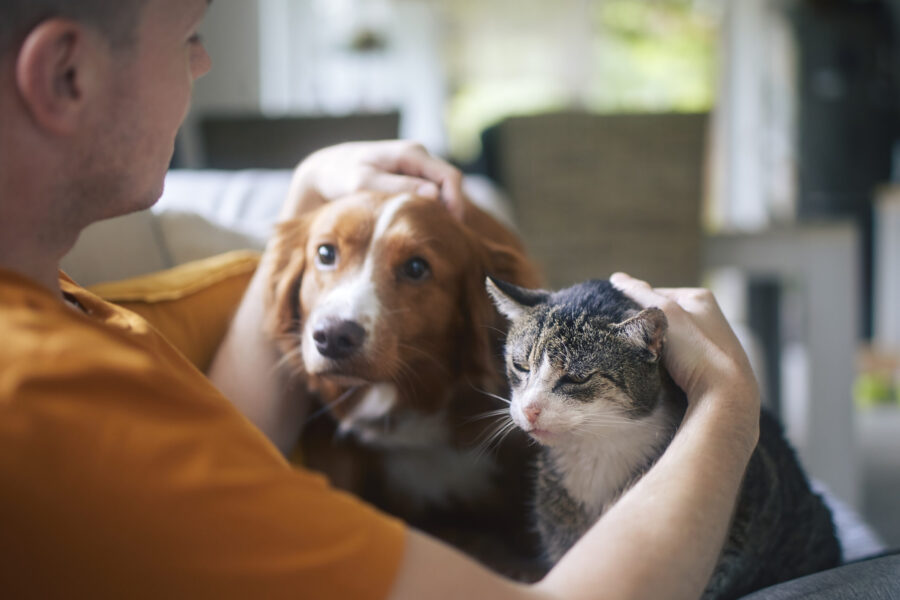[ad_1]
Stress in companion animals can cause health problems and unwanted behaviors, but it’s not always easy to spot. Here are the most common signs of stress in dogs and cats and six ways to help your fur baby.
Dogs and cats can experience stress just like humans. Common sources of stress for them include changes in their environment, sudden loud noises like fireworks or sirens, new family members, medical issues, or even your stress. Recognizing stressors is a good step toward helping your animal companion feel more comfortable and secure. Let’s talk about the most common signs of stress in dogs and cats and the steps you can take to help alleviate it.
Changes in Behavior Are a Huge Red Flag for Stress
Changes in behaviors can include becoming more withdrawn or exhibiting aggression. For example, a normally friendly dog might growl at strangers, or a cat that usually enjoys being petted may suddenly avoid contact. Restlessness can be another indicator, especially when accompanied by excessive vocalization, like barking or meowing.
Restlessness and vocalization can also indicate an underlying medical condition, so have your veterinarian rule out illnesses.
Other Common Signs of Stress in Dogs and Cats
- Destructive behaviors, such as chewing furniture or digging holes in the yard (these actions occur in young and bored animals but can also indicate attempts to relieve anxiety)
- Loss of interest in food or inappropriate eating
- Pacing and panting
- Seeking solitude or hiding
- Physical symptoms, such as excessive grooming, hair loss, inappropriate urination or elimination, diarrhea, or vomiting
If your dog or cat is manifesting such signs, consult your veterinarian to rule out any underlying health concerns and to address their anxiety.
6 Steps to Help Alleviate Stress for Companion Animals
Step 1: Create a Safe Space for Them
This should be a quiet area where your dog or cat can retreat when feeling overwhelmed. Examples include a cozy bed or cat tree away from the household hustle and bustle.
Step 2: Make a Routine
Dogs and cats thrive on routine because it provides consistency and stability. Create and stick to a regular schedule for walks, feeding, and play.
Step 3: Engage Them Mentally and Physically
Try toys like puzzle feeders or interactive toys that challenge them mentally and can supply little dopamine hits with every success. Meanwhile, physical activity like interactive playtime and walks are crucial for reducing pent-up energy and releasing natural endorphins.
Step 4: Harness the Power of Pheromones
Pheromones are chemicals that animals release to trigger an effect on other animals in the area. Products such as collars, wipes, and diffusers that mimic calming pheromones are designed to promote a sense of safety, reduce anxiety, and diminish the signs of stress in dogs and cats.
Step 5: Consult with an Animal Behaviorist or Trainer
These pros can help you develop a plan to counter-condition negative behaviors and positively reinforce the calm behavior you want to encourage. If needed, your veterinarian can prescribe calming medications to support the training portion of the behavior modification plan.
Step 6: Learn to Manage Your Own Stress
Don’t underestimate the strength of your presence and demeanor. Your calm manner and soft reassurances, paired with gentle pets, are the final ingredients in the recipe to reassure your anxious dog or cat.
Dr. Bethany Hsia is a veterinarian and co-founder of CodaPet.
[ad_2]
Source link
